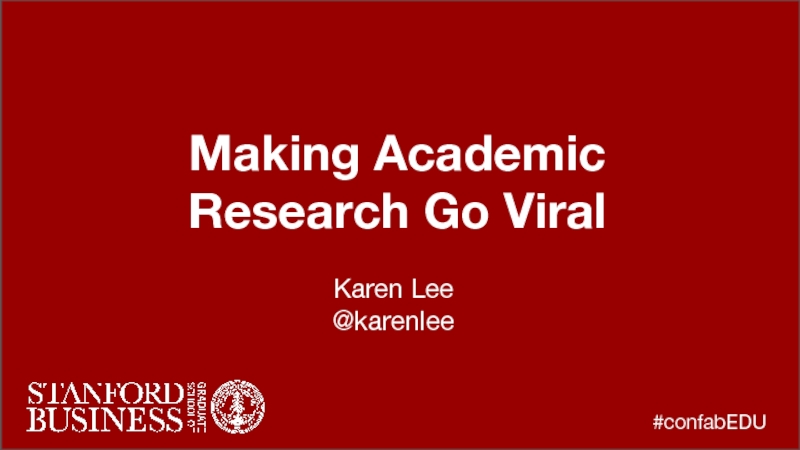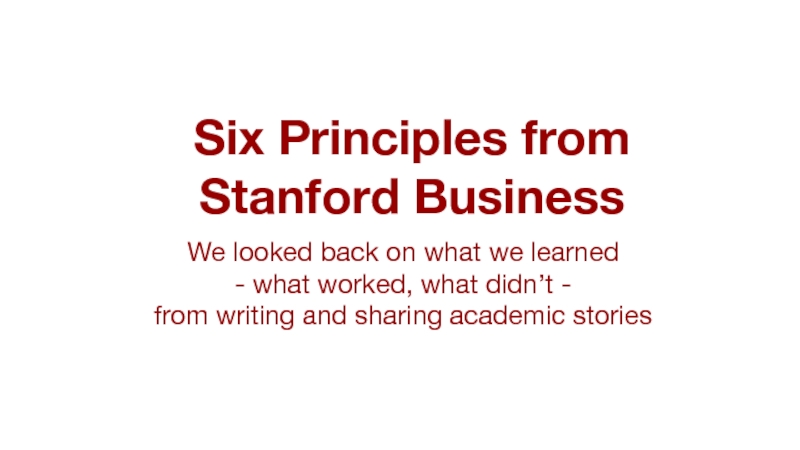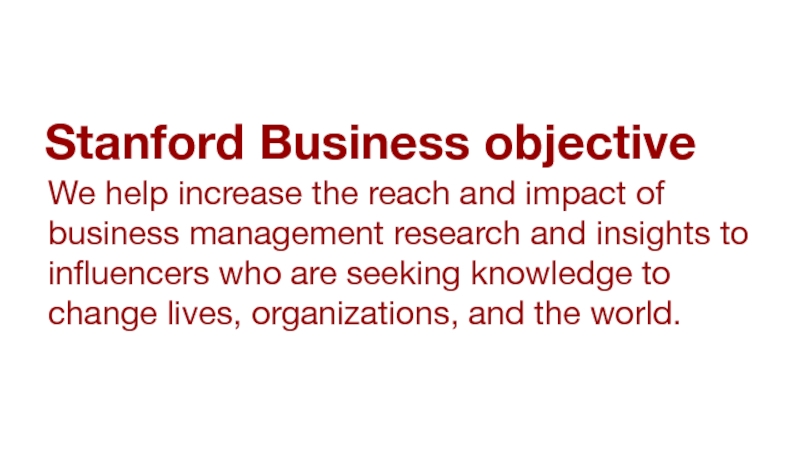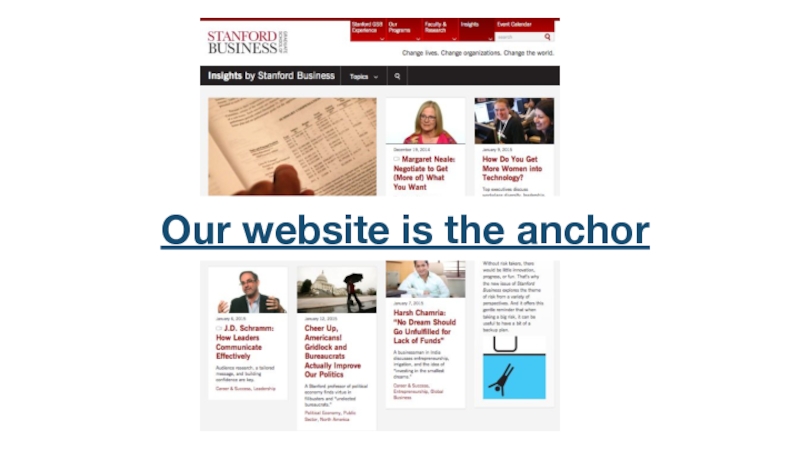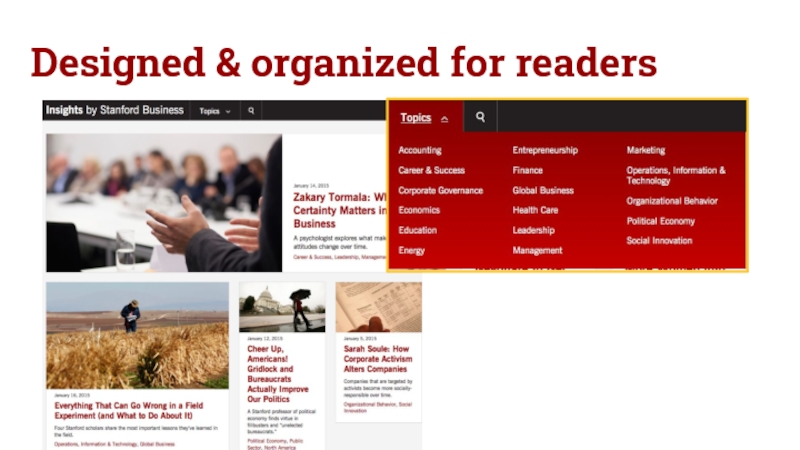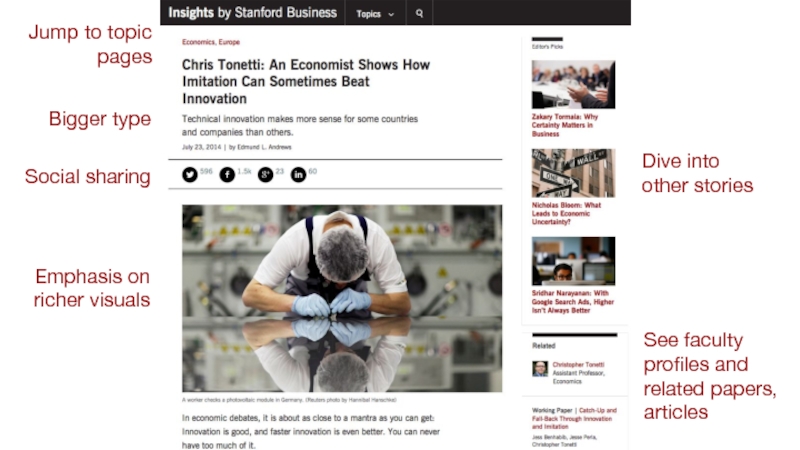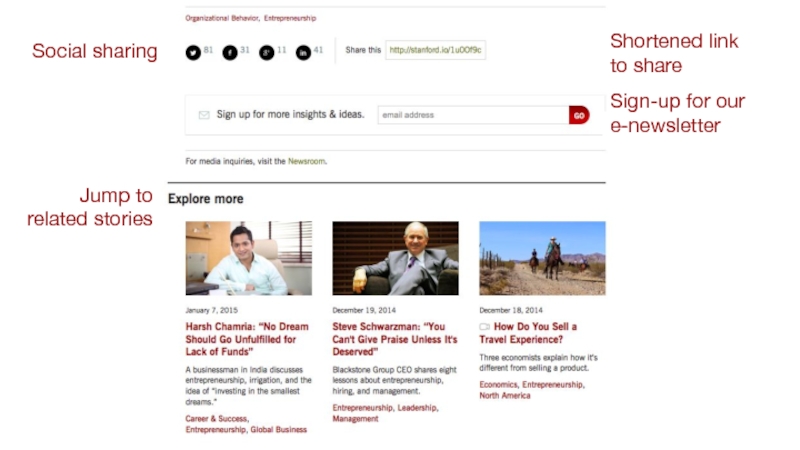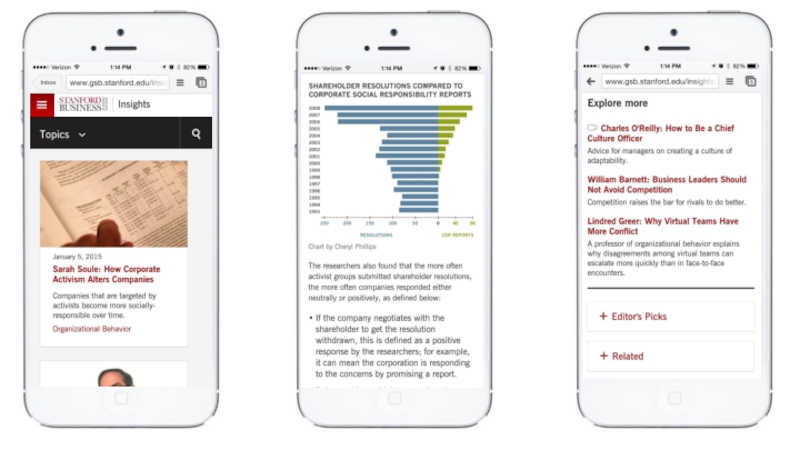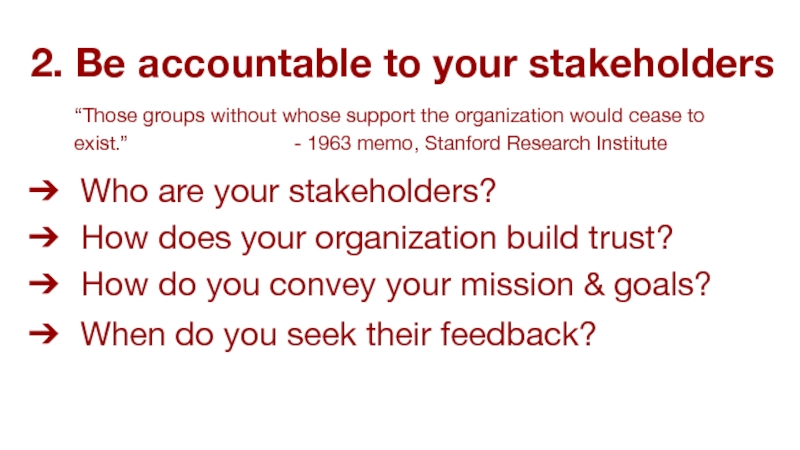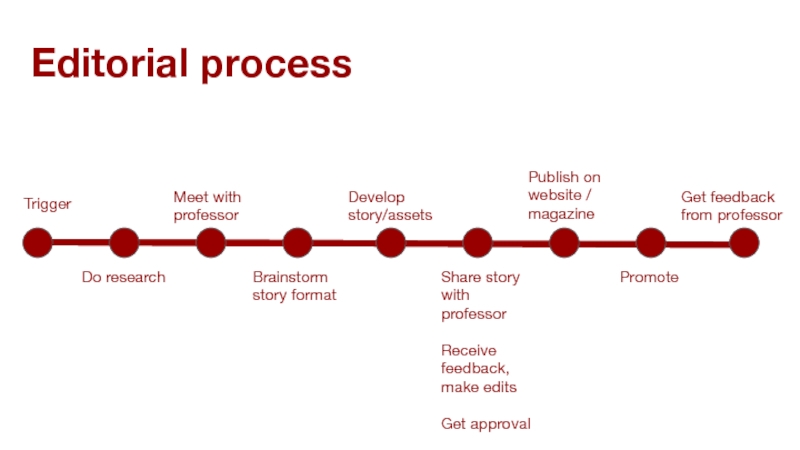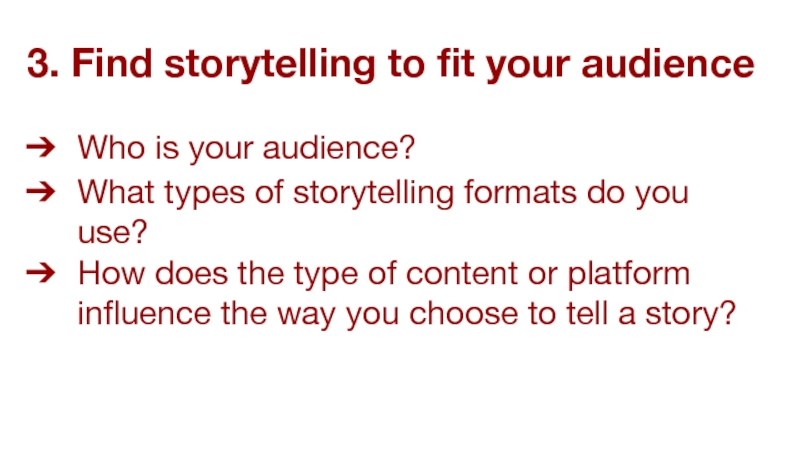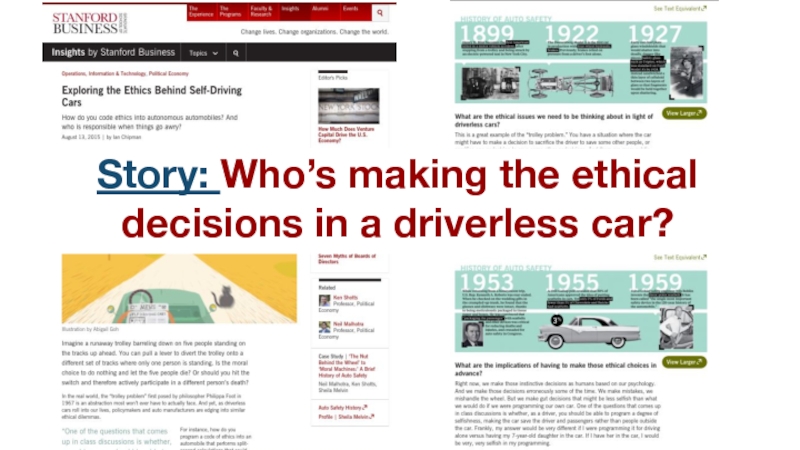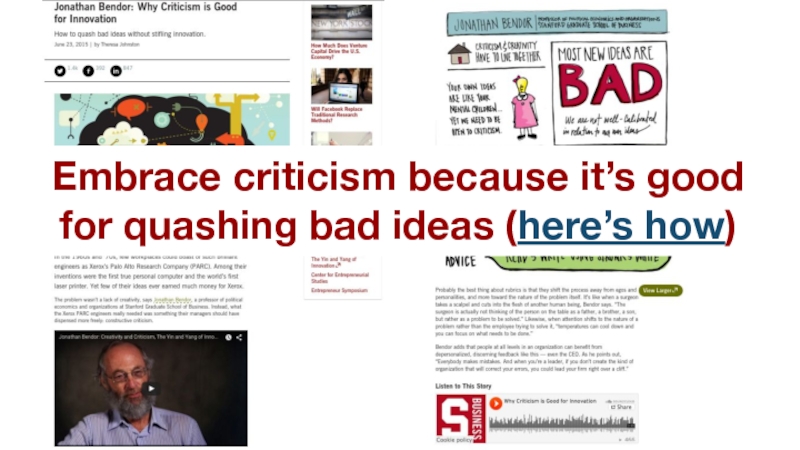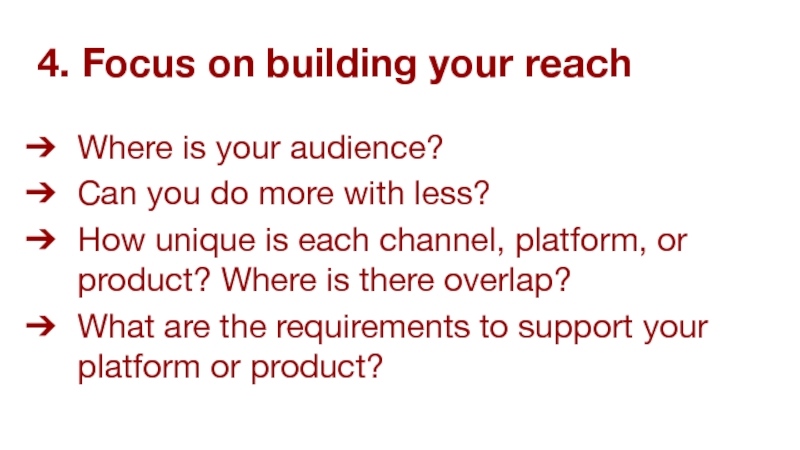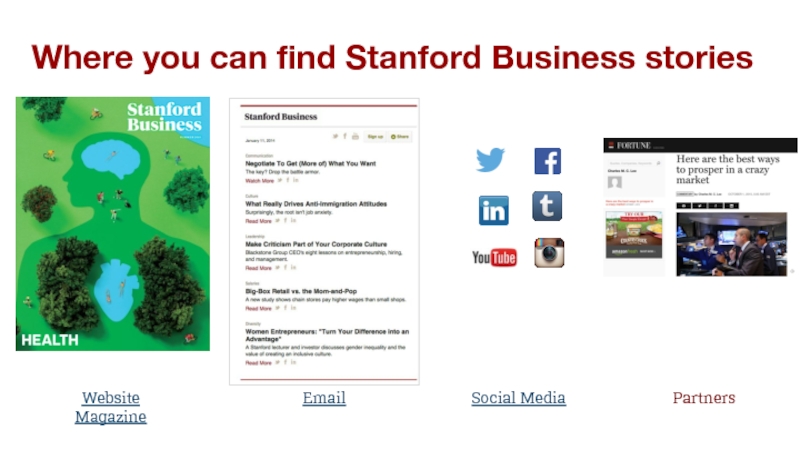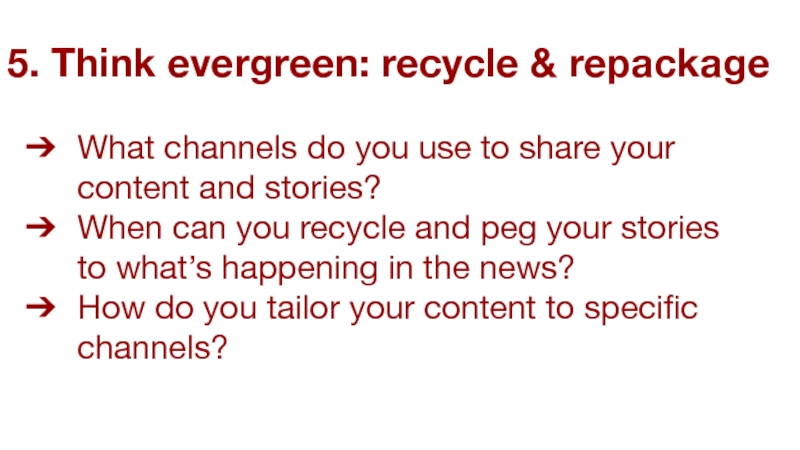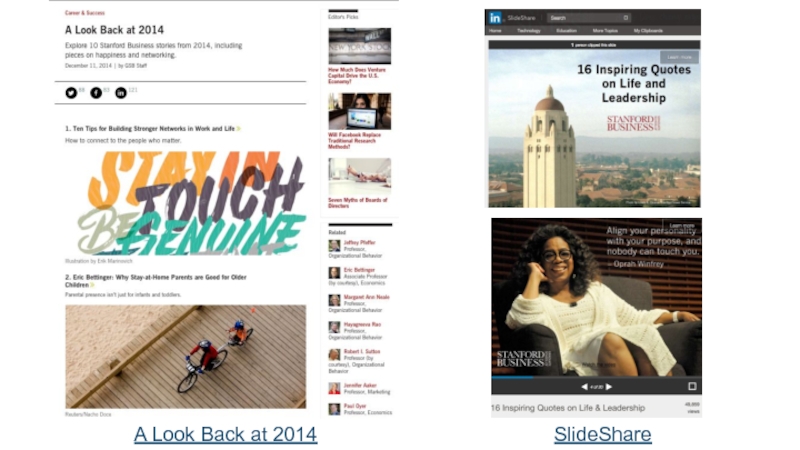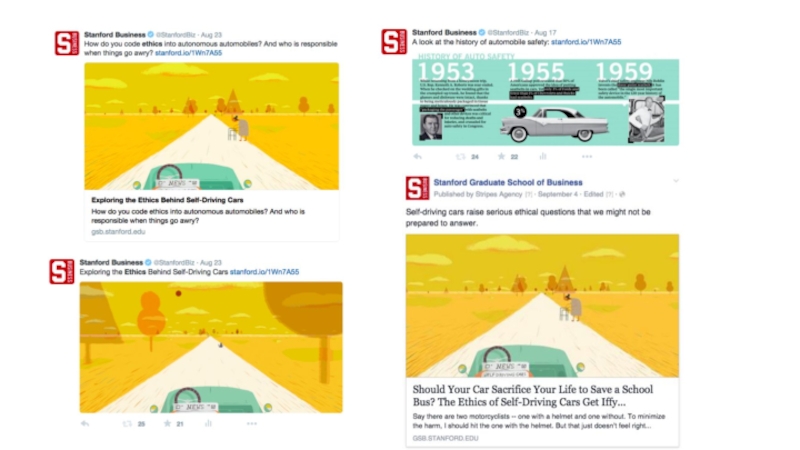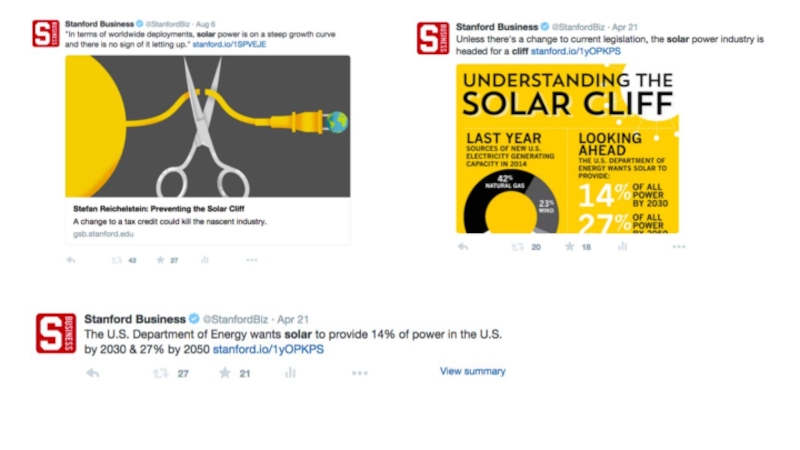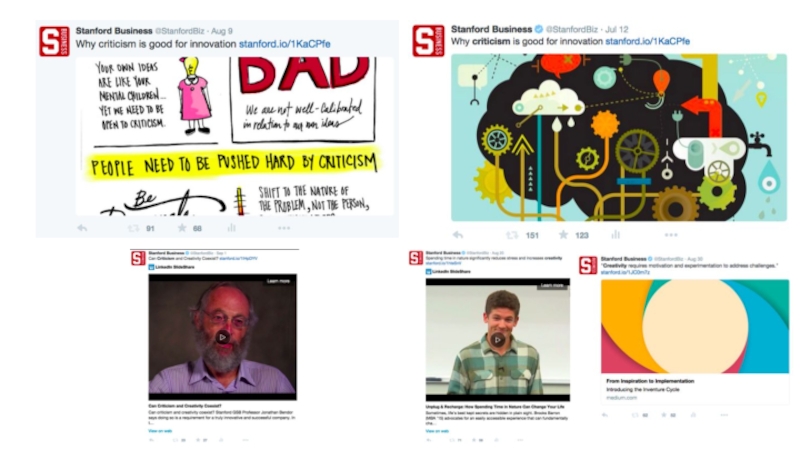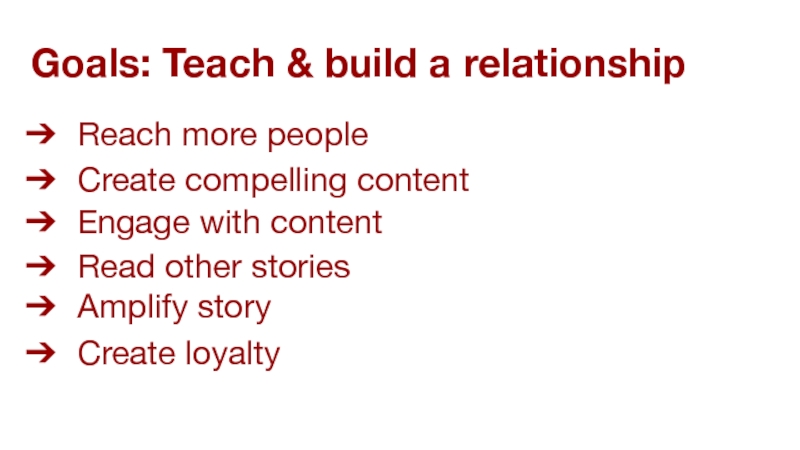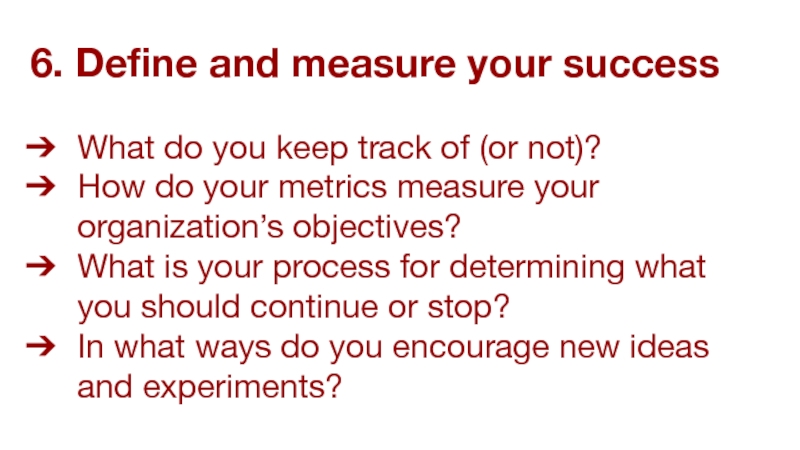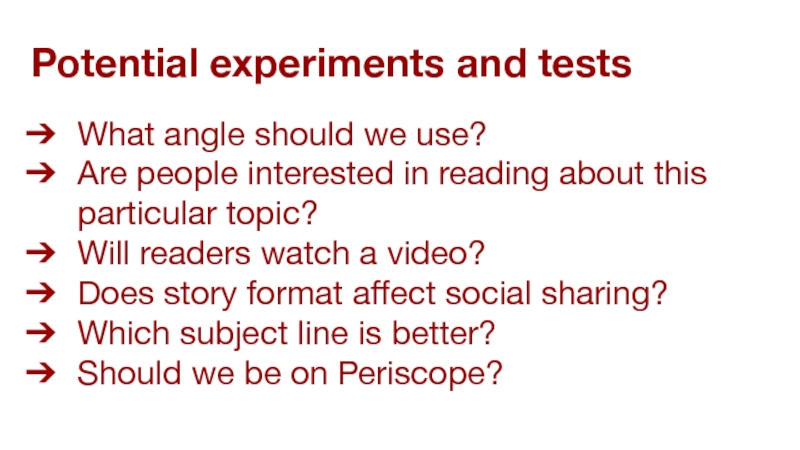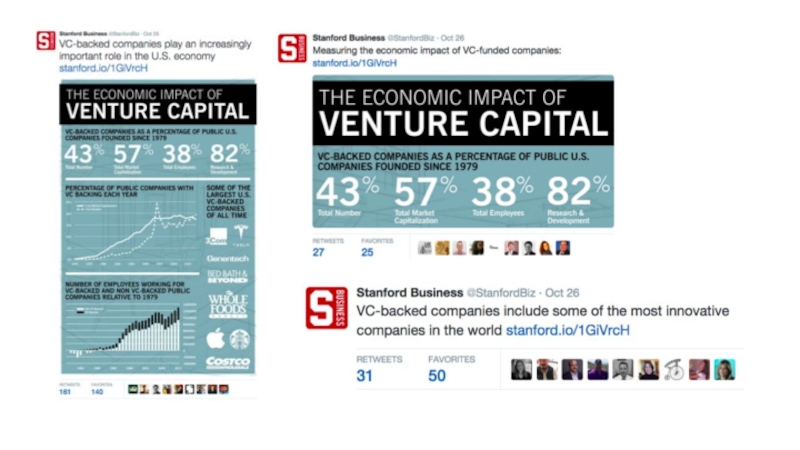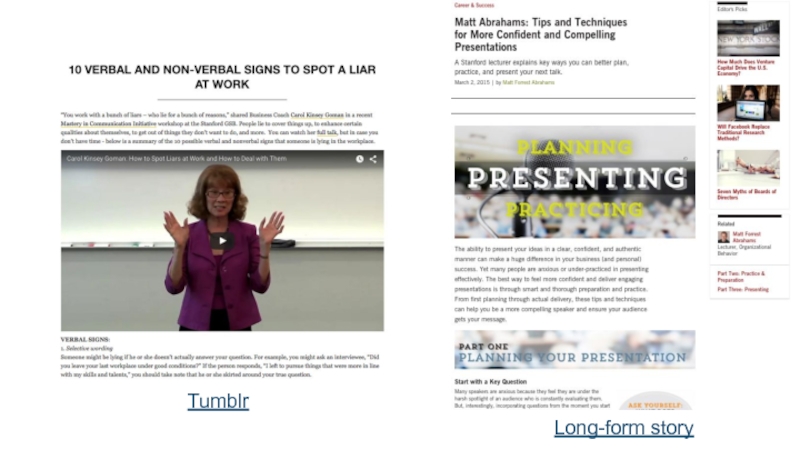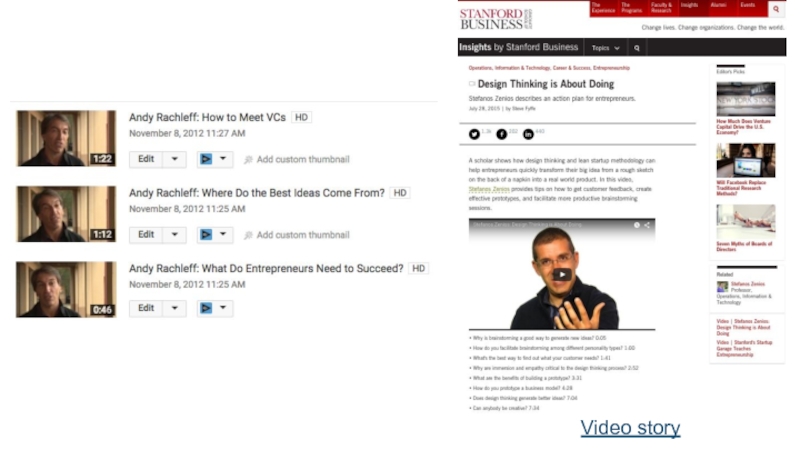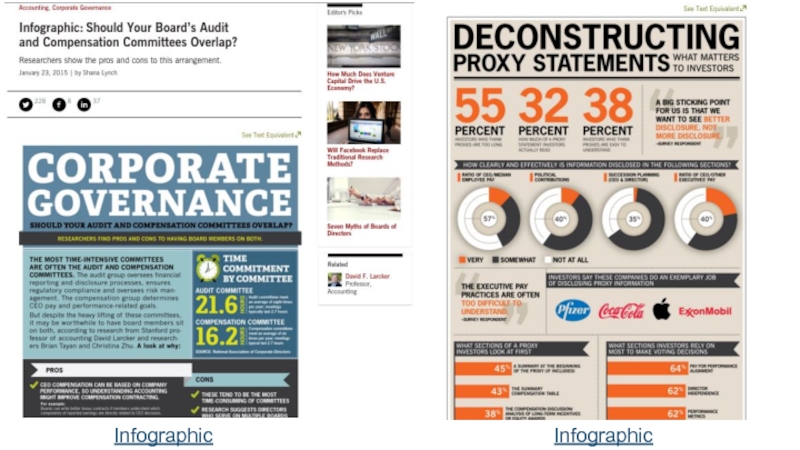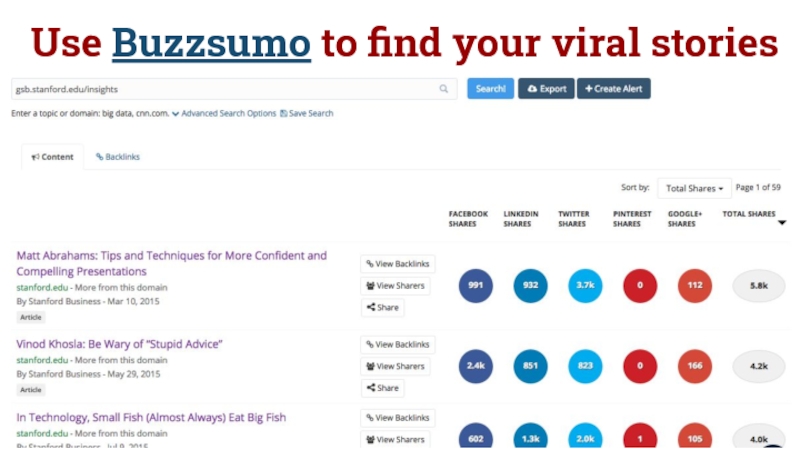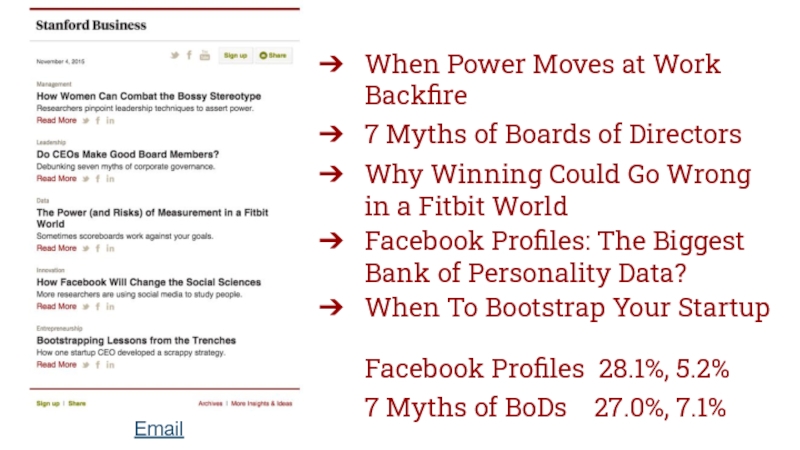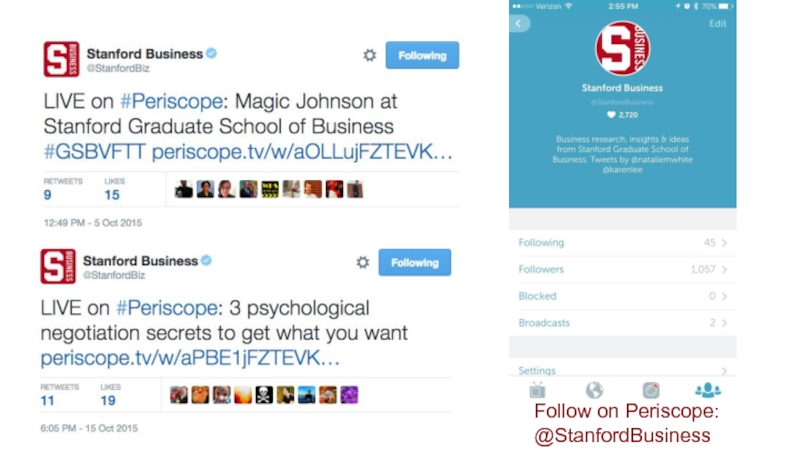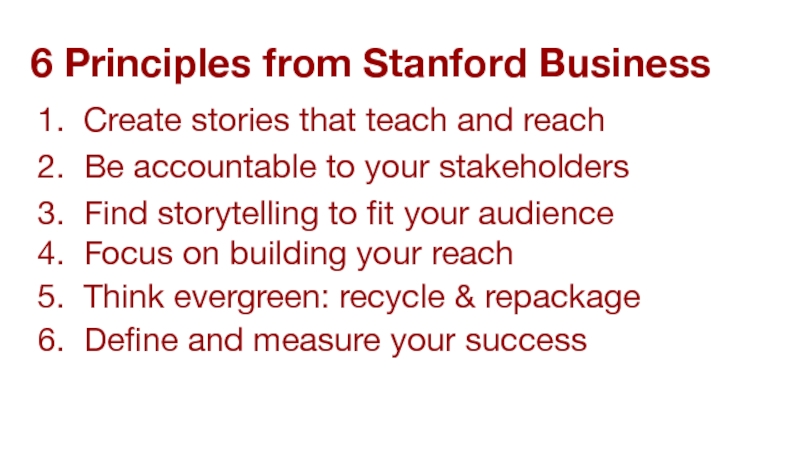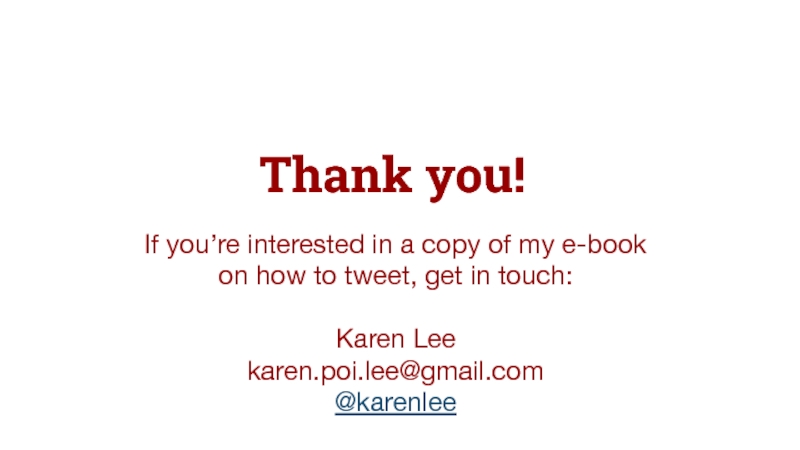- Главная
- Разное
- Дизайн
- Бизнес и предпринимательство
- Аналитика
- Образование
- Развлечения
- Красота и здоровье
- Финансы
- Государство
- Путешествия
- Спорт
- Недвижимость
- Армия
- Графика
- Культурология
- Еда и кулинария
- Лингвистика
- Английский язык
- Астрономия
- Алгебра
- Биология
- География
- Детские презентации
- Информатика
- История
- Литература
- Маркетинг
- Математика
- Медицина
- Менеджмент
- Музыка
- МХК
- Немецкий язык
- ОБЖ
- Обществознание
- Окружающий мир
- Педагогика
- Русский язык
- Технология
- Физика
- Философия
- Химия
- Шаблоны, картинки для презентаций
- Экология
- Экономика
- Юриспруденция
Making Academic Research Go Viral презентация
Содержание
- 1. Making Academic Research Go Viral
- 2. We looked back on what we learned
- 3. While I was at the GSB, I
- 4. 1. Create stories that teach and reach
- 5. Stanford Business objective We help increase
- 6. Our website is the anchor
- 7. Before: June 2012
- 8. Designed & organized for readers
- 9. Bigger type Jump to topic pages
- 10. Sign-up for our e-newsletter Jump to related stories Shortened link to share Social sharing
- 12. “Those groups without whose support the organization
- 13. Editorial process Trigger Do research Meet
- 14. 3. Find storytelling to fit your audience
- 15. Story: Who’s making the ethical decisions in a driverless car?
- 16. Story: A change to a tax credit could kill the nascent U.S. solar industry
- 17. Embrace criticism because it’s good for quashing bad ideas (here’s how)
- 18. Best practices for video interview
- 19. 4. Focus on building your reach
- 20. Where you can find Stanford Business stories Website Magazine Email Partners Social Media
- 21. 5. Think evergreen: recycle & repackage
- 22. SlideShare A Look Back at 2014
- 23. 7 Business Books and Business Goals Setting Vague Goals
- 27. Goals: Teach & build a relationship
- 28. 6. Define and measure your success
- 29. Potential experiments and tests What angle
- 31. Tumblr Long-form story
- 32. Video story
- 33. Infographic Infographic
- 34. Use Buzzsumo to find your viral stories
- 35. When Power Moves at Work Backfire
- 36. Follow on Periscope: @StanfordBusiness
- 37. 6 Principles from Stanford Business 1. Create
- 38. If you’re interested in a copy of
Слайд 2We looked back on what we learned - what worked, what
Six Principles from
Stanford Business
Слайд 3While I was at the GSB, I felt intellectually on fire
- Alumna
Слайд 41. Create stories that teach and reach
“If you can’t explain to
Fulfills a public purpose to promote education and learning
Fuels people’s desire for lifelong learning
Help people better understand the world
Inspire people (practical, aspirational)
Слайд 5Stanford Business objective
We help increase the reach and impact of business
Слайд 9Bigger type
Jump to topic pages
Emphasis on richer visuals
Social sharing
Dive
other stories
See faculty
profiles and related papers, articles
Слайд 12“Those groups without whose support the organization would cease to exist.”
2. Be accountable to your stakeholders
Who are your stakeholders?
How does your organization build trust?
How do you convey your mission & goals?
When do you seek their feedback?
Слайд 13Editorial process
Trigger
Do research
Meet with professor
Brainstorm story format
Develop story/assets
Share story with
Receive feedback, make edits
Get approval
Get feedback from professor
Publish on website / magazine
Promote
Слайд 143. Find storytelling to fit your audience
Who is your audience?
What
How does the type of content or platform influence the way you choose to tell a story?
Слайд 18Best practices for video interview
Do your homework
Keep it conversational and
“It’s all about control without making it look controlled.” - Beth Rimbey
Go in with a narrow idea of what you want the end product to look like
Take your time
Слайд 194. Focus on building your reach
Where is your audience?
Can you
How unique is each channel, platform, or product? Where is there overlap?
What are the requirements to support your platform or product?
Слайд 215. Think evergreen: recycle & repackage
What channels do you use to
When can you recycle and peg your stories to what’s happening in the news?
How do you tailor your content to specific channels?
Слайд 27Goals: Teach & build a relationship
Reach more people
Create compelling
Engage with content
Read other stories
Amplify story
Create loyalty
Слайд 286. Define and measure your success
What do you keep track of
How do your metrics measure your organization’s objectives?
What is your process for determining what you should continue or stop?
In what ways do you encourage new ideas and experiments?
Слайд 29Potential experiments and tests
What angle should we use?
Are people interested in
Will readers watch a video?
Does story format affect social sharing?
Which subject line is better?
Should we be on Periscope?
Слайд 35
When Power Moves at Work Backfire
7 Myths of Boards of Directors
Why
Facebook Profiles: The Biggest Bank of Personality Data?
When To Bootstrap Your Startup
Facebook Profiles 28.1%, 5.2%
7 Myths of BoDs 27.0%, 7.1%
Email
Слайд 376 Principles from Stanford Business
1. Create stories that teach and reach
2.
3. Find storytelling to fit your audience
4. Focus on building your reach
5. Think evergreen: recycle & repackage
6. Define and measure your success
Слайд 38If you’re interested in a copy of my e-book on how
karen.poi.lee@gmail.com
@karenlee
Thank you!
